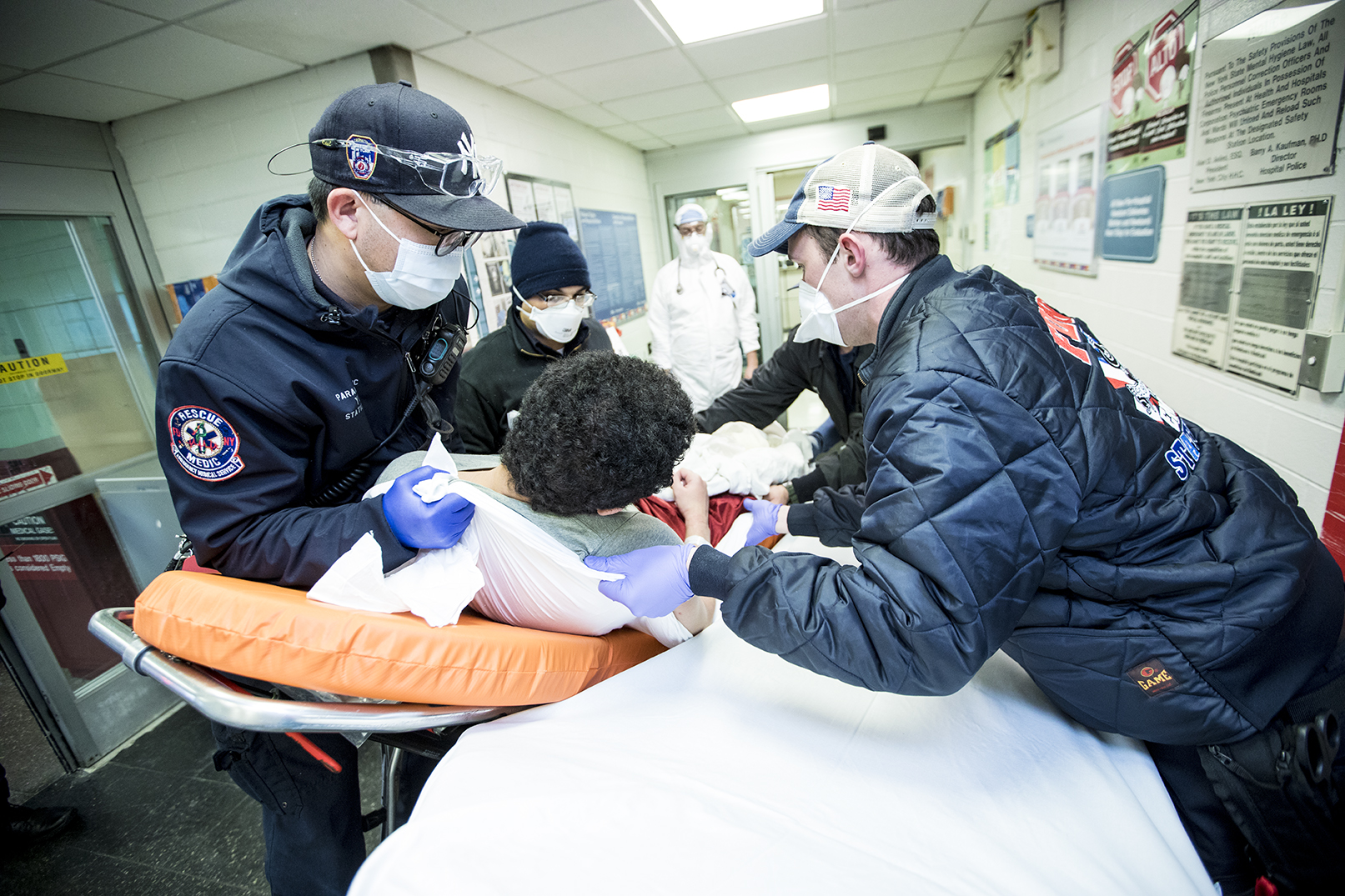Response to the COVID-19 Pandemic
NYC Health + Hospitals began pandemic planning and response in late January 2020 to prepare for a surge in patients in respiratory distress, using some lessons learned from past public health crises and natural disasters, including Ebola and Superstorm Sandy.
Over a six-week period during March and April, the health system went from zero patients with COVID-19 to almost 4,000 patients. And from zero to almost 1,000 patients who were intubated.
Throughout 2020, the health system family has continued to meet the challenge of caring for scores of New Yorkers with COVID-19 and supporting our workforce.

Supporting patients and families
- Expanded ICU bed capacity system wide from 320 to a total of 3,000 additional ICU beds by May 1, nearly tripling the base ICU capacity of the 11 hospitals - more than any other hospital system in the country.
- Deployed more than 750 clinicians to provide telephonic clinical guidance to thousands of New Yorkers who called 311 every day to help redirect people from coming to the emergency room unnecessarily.
- Answered approximately 13,000 messages from patients via MyChart patient portal over a six-week period during the pandemic.
- Lessened the impact on the elderly and frail in our long-term care facilities by leveraging the shared resources of our integrated system: staff, supplies, clinical leadership, expertise and technology. We also took steps to protect our staff and patient inmates under the care of our Correctional Health Services.
- Responded to more than 80,000 New Yorkers who called used the COVID-19 hotline we set up in March to connect with clinicians to answer questions on the virus, assess symptoms, and get connected to care.
Supporting our Health Care Heroes:
- Expanded our Helping Healers Heal program to offer support and counseling to the health care workers dealing with emotional and psychological trauma due to the crisis.
- Provided relief to many of our front-line clinical staff by adding temporary/supplemental staffing, including 4,000 nurses, 500 providers (doctors, physician assistants, nurse practitioners), 250 environmental health workers (housekeeping) and 200+ other ancillary personnel such as respiratory therapists and pharmacists.
- Met a 600% increase in demand for PPE to deliver safe care and protect our workforce by creating a new centralized ordering system.
- Organized a fundraising operation to support our health care heroes and their families like no other in the recent history of our public health care system. Thanks to the outpouring of support from the local, national and global communities who donated more than $30 million in cash and in-kind donations, we were able to lighten the load for our frontline staff with free hotel rooms, three meals a day, free taxi rides, child care, extra scrubs, grab and go groceries.